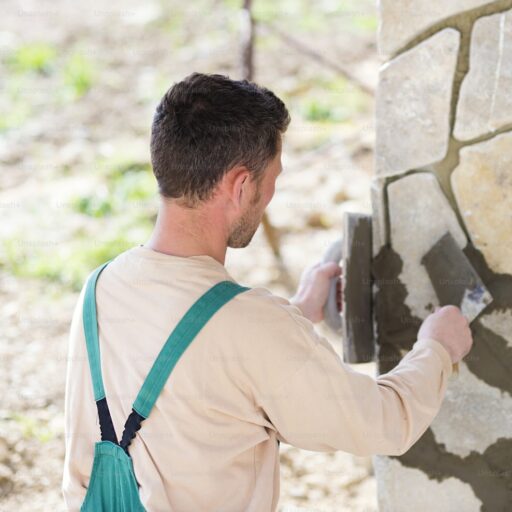When you’re choosing materials for your landscaping or construction project, sandstone can feel like the holy grail of natural beauty. But before you get swept away by its rustic charm and earthy tones, there are a few essential things you should know. Whether you’re building a patio, a retaining wall, or an outdoor kitchen—this guide will give you the lowdown on what makes sandstone an excellent choice (and when it might not be).
What is Sandstone?
Sandstone is a sedimentary rock formed from compacted sand and mineral particles over millions of years. It’s loved for its natural aesthetic and warm palette, ranging from soft yellows and golds to bold reds and browns.
Natural Characteristics of Sandstone
Every piece of sandstone is unique. Veins, grains, and textures make each slab different, which is both a blessing and a challenge when planning a cohesive design.
1. Sandstone Is Naturally Durable—but Not Indestructible
Sandstone is strong, yes—but don’t confuse it with indestructible.
Understanding Wear and Tear Over Time
Over time, sandstone can wear down if it’s constantly exposed to water, heavy foot traffic, or abrasive cleaning. This makes sandstone maintenance crucial to preserving its beauty.

2. The Color Variations Can Make or Break Your Aesthetic
From Earthy Tones to Bold Reds
Sandstone comes in a wide array of colors—perfect if you want a specific mood or theme.
Matching Sandstone to Design Themes
Want a Mediterranean look? Opt for golden or beige tones. Going for rustic or Southwestern? Reds and oranges are your go-to. It’s all about setting the tone—literally.
3. Sandstone Is Surprisingly Versatile
Where You Can Use It
One of sandstone’s biggest strengths is how many different applications it supports.
Walls, Walkways, Patios, and More
From wall stone and retaining walls to pavers and flagstone patios, you can pretty much use sandstone anywhere you’d consider natural stone.
4. Maintenance Isn’t Optional
Here’s the deal—sandstone needs love.
Cleaning Tips and Surface Care
Use a soft brush and pH-neutral cleaner. Avoid harsh chemicals that can break down the surface.
The Importance of Sandstone Maintenance
Regular sealing and cleaning extend its lifespan and help retain that gorgeous original tone.
5. Know the Types Before You Buy
Sandstone isn’t one-size-fits-all. There are types suited for different jobs.
Sandstone Slabs, Pavers, and Veneers
- Slabs: Great for steps and countertops
- Pavers: Ideal for patios and driveways
- Veneers: Perfect for decorative walls or facades
Refer to Sandstone Basics to get the full scoop before purchasing.
6. Installation Matters—Big Time
You might think laying stone is easy, but it’s where most projects go wrong.
DIY vs Professional Installation
If you’re not confident with leveling, drainage, or grouting—hire a pro.
Common Mistakes to Avoid
Improper sealing, uneven base, or wrong adhesive can all lead to cracked or shifted stone later.
7. Cost Varies Widely
Prices can range drastically based on quality, thickness, and finish.
Budgeting for Quality Stone
Cheaper doesn’t mean better. Invest in well-cut stone from reputable suppliers.
Remember, you get what you pay for.
Value vs Price
You’re not just paying for the stone—you’re paying for a long-lasting, gorgeous surface.
8. Think Long-Term—Not Just Now
Sandstone has a natural beauty that ages like wine—if taken care of.
How Sandstone Ages
With time, it can develop a charming patina, especially in outdoor settings.
Lifespan and Patina
With the right care, sandstone can last decades, even generations.
9. It’s Eco-Friendly—When Sourced Right
Being a natural stone, sandstone has a low carbon footprint—when ethically sourced.
Sustainability and Stone Quarries
Look for sandstone that comes from sustainable quarries and eco-conscious suppliers. It’s not just good for your yard—it’s good for the planet.
10. Design Potential is Huge
You’ve got options galore with sandstone.
Popular Sandstone Design Ideas
From geometric flagstone walkways to winding garden paths—it’s a designer’s dream.
Mixing With Boulders & Steps and Natural Stone Slabs
Combining materials adds texture and depth. Think layered looks, contrasting colors, and multi-level landscaping.
Final Thoughts: Is Sandstone Right for You?
At the end of the day, sandstone offers a magical combination of beauty, durability, and versatility. But it’s not a “set it and forget it” kind of material. It requires planning, regular care, and a good match for your climate and project goals.
When sourced and installed properly, sandstone can transform your outdoor or indoor space into a stunning masterpiece. So before you buy, take a breath, revisit this list, and choose smartly.
FAQs
1. Is sandstone better than granite?
Not necessarily. Sandstone is more affordable and easier to work with, but granite is harder and more scratch-resistant.
2. How do you protect outdoor sandstone?
Seal it regularly, clean it gently, and avoid harsh chemicals or pressure washing.
3. Can sandstone be used for retaining walls?
Absolutely! Check out wall stone retaining wall options for inspiration.
4. What’s the best sealer for sandstone?
Choose a penetrating sealer specifically designed for natural stone—ask your supplier for recommendations.
5. How often should I maintain sandstone?
At least once or twice a year, especially in high-traffic or outdoor areas.
6. Is sandstone slippery when wet?
It can be. Textured finishes or anti-slip coatings are recommended for wet zones.
7. Can I mix sandstone with other materials like brick or concrete?
Yes! Mixing it with pavers, bricks, or concrete can add stunning visual interest and contrast.

